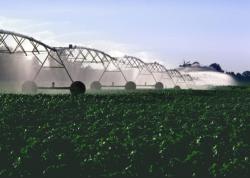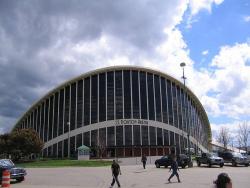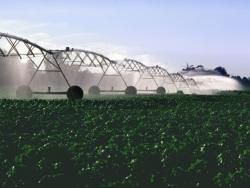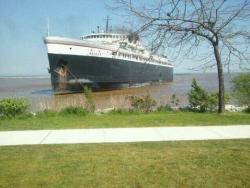The two 3,500-hp steeple compound Unaflow steam engines powering the S.S. Badger represent one of the last types of reciprocating marine steam engines. Built by the Skinner Engine Company, most Unaflow engines are single expansion. These feature tandem high- and low-pressure cylinders separated by a common head. The Badger's four Foster-Wheeler Type D marine boilers, which supply 470-psig steam to the engines, are among the last coal-fired marine boilers built.
1952



The Dorton Arena was the first use of a cable-supported roof system in the world. Commissioned in 1949 by North Carolina State Fair manager J.S. Dorton, the new building was intended to be a livestock judging pavilion. Architect Matthew Nowicki (1910 - 1950) proposed a structure that included a pair of intersecting parabolic arches supported by slender columns around its perimeter with a network of wire cables that supported the saddle-shaped roof.

The DWP was the first mechanized, compact service-line trencher developed for laying underground water lines between the street-main and the house. This machine, first produced in 1949, replaced manual digging, thus making installation of running water and indoor plumbing affordable for the common household. The DWP paved the way for the creation of a worldwide trenching-products industry, its machines used for the installation of all underground utilities including telephone, cable-TV and data, and fiber-optic cables.
Innovations

The DWP was the first mechanized, compact service-line trencher developed for laying underground water lines between the street-main and the house. This machine, first produced in 1949, replaced manual digging, thus making installation of running water and indoor plumbing affordable for the…
Read More
The Dorton Arena was the first use of a cable-supported roof system in the world. Commissioned in 1949 by North Carolina State Fair manager J.S. Dorton, the new building was intended to be a livestock judging pavilion. Architect Matthew Nowicki (1910 - 1950) proposed a structure that…


The two 3,500-hp steeple compound Unaflow steam engines powering the S.S. Badger represent one of the last types of reciprocating marine steam engines. Built by the Skinner Engine Company, most Unaflow engines are single expansion. These feature tandem high- and low-pressure cylinders separated…
Read More

